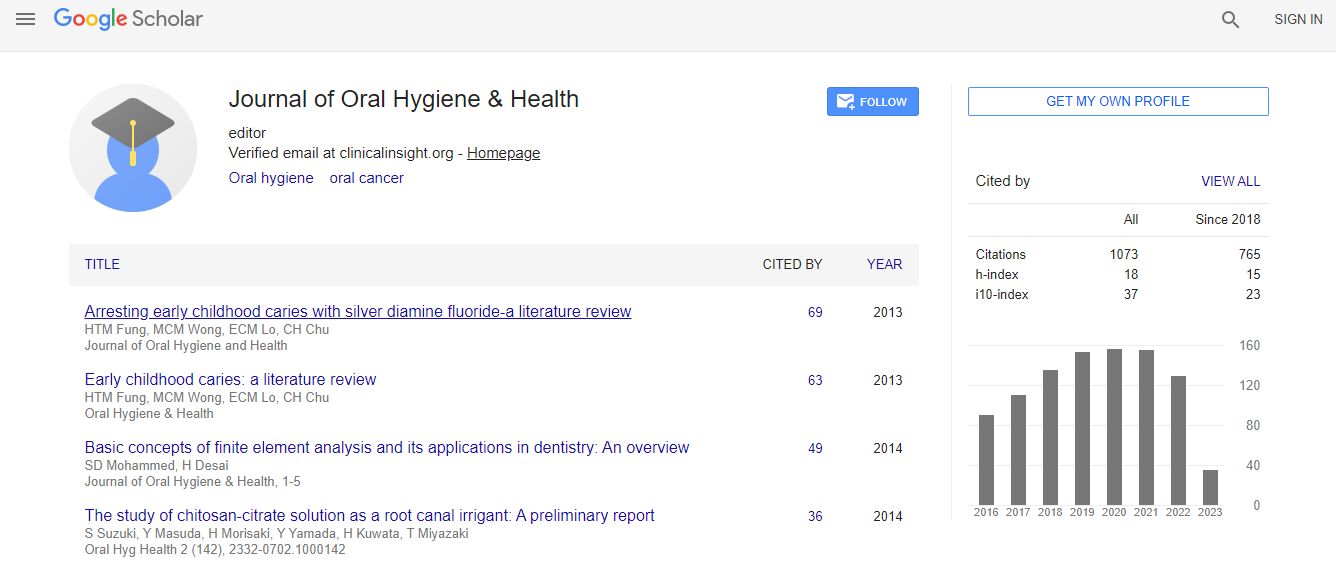Our Group organises 3000+ Global Conferenceseries Events every year across USA, Europe & Asia with support from 1000 more scientific Societies and Publishes 700+ Open Access Journals which contains over 50000 eminent personalities, reputed scientists as editorial board members.
Open Access Journals gaining more Readers and Citations
700 Journals and 15,000,000 Readers Each Journal is getting 25,000+ Readers
Google Scholar citation report
Citations : 1073
Journal of Oral Hygiene & Health received 1073 citations as per Google Scholar report
Journal of Oral Hygiene & Health peer review process verified at publons
Indexed In
- Index Copernicus
- Google Scholar
- Open J Gate
- JournalTOCs
- RefSeek
- Hamdard University
- EBSCO A-Z
- OCLC- WorldCat
- Publons
- Geneva Foundation for Medical Education and Research
- Euro Pub
- ICMJE
Useful Links
Recommended Journals
Related Subjects
Share This Page
Distalization of the maxillary posterior segments using efficient miniscrew implant mechanics
Annual Congress on Endodontics, Orthodontics, Prosthodontics and Dental Implants
Hugo Terrones Garrido
Autonomous University of Nuevo Leon, Mexico
Posters & Accepted Abstracts: J Oral Hyg Health
Abstract
Purpose: To show how the posterior segments of the maxillary dentition can be efficiently distalized by using palatal miniscrew implants and a lingual bonded splint. Method: A 14-year-old patient with class-2 malocclusion was treated by using a custom lingual splint (laboratory made) and bonding it to the palatal surfaces of the maxillary posterior teeth (first premolar, second premolar, first molar and second molar). This splint has one guiding tube per side at the level of the each first molar where the trans-palatal distalizing sliding tube is placed. Two miniscrew implants are placed in the parasagittal region of the palate at the level of the first molar so that the distalizer is activated using 250 grams of force per side. This activation creates two forces, one above and one below the center of resistance of the posterior segment that will distalize the whole posterior block of teeth as one unit with minimum tipping. The device is only activated once until the teeth have moved distally and more activation is required. Result: In 6 months of treatment a distalization of 6 mm of the whole maxillary posterior segments was observed with minimum tipping. After this, retraction and space closure of the maxillary was possible to finish the case with good occlusion. Conclusion & Significance: This case has shown the methods of simple way to distalize the maxillary posterior dentition. Vertical control was also possible by using this mechanics, when evaluated by radiographs.Biography
E-mail: hugotg6@hotmail.com

 Spanish
Spanish  Chinese
Chinese  Russian
Russian  German
German  French
French  Japanese
Japanese  Portuguese
Portuguese  Hindi
Hindi 
